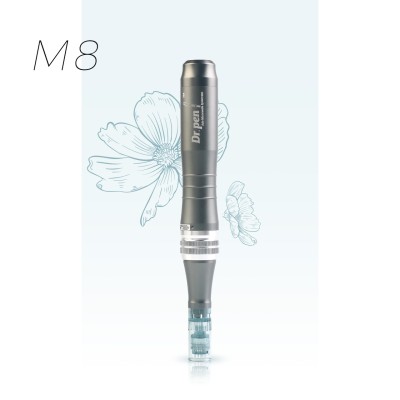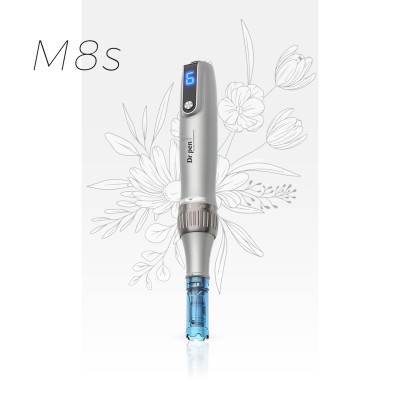Winter Skin Care Tips

Written by:Shannon Steck
Medically Reviewed by:Debra Jaliman MD Board-Certified Dermatologist
In this article:
How winter weather affects skin
Skin care tips for winter
Winter skin care routine
What to avoid in the winter
Cold, arid environments and weather can render skin dry, irritated and uncomfortable. We know how disagreeable this can be. Who has the time to put up with flaking, tingling and an impaired skin barrier?
Luckily, we’ve got a good grip on how to restore skin’s health during colder temperatures, particularly during winter. Below, we walk you through just how winter’s unique environment and circumstances damage skin and what you can do about it to get back to healthy, nourished skin in no time.
How winter weather affects skin
Winter creates the perfect recipe for dry, sensitized skin. Temperature drops, cold, whistling winds, dry air and low humidity (both inside and outside) create the perfect skin-storm.
The combination of cold, dry outside environments and hot, dry inside air can send healthy skin of all types into a tailspin (1). That means anyone, from those who have dry/normal to oily/combination skin can fall susceptible to winter’s unfriendly environment, resulting in:
- Dehydration
- Dryness
- Tightness
- Flaking
- Redness in lighter skin tones and a darkening, or purple wash, in medium-to-dark skin tones
Beyond this, winter can also create some particularly harsh sunburns. Although this seems a bit counterintuitive, snow potently reflects the sun’s damaging UV rays (2). This is why sunscreen is integral to winter skin care.
Although one might think it's just those with dry skin who need to focus on skin repair during the winter, it's oily/combination skin types too. As we touched on, winter means dry, arid air both inside and outside. No matter where you go during the colder months, the air around you is likely lacking humidity. Humidity is integral for skin hydration, even for those with oilier skin. Hydration doesn’t make skin oily, an overproduction of sebum, or oil, does!
All skin types can experience the unwanted repercussions of winter; however, each skin type requires a different approach to combatting them. More on that later!
Skin care tips for winter
Skin care tips for winter focus on creating a hydrating environment- both on and off skin-to combat winter’s arid ways.
Our favorite winter skin care tips include:
- Avoiding over cleansing. If your skin’s feeling tight and dry when you first wake up, skip your morning cleanse. Listen to your skin!
- Seek out water-attracting ingredients and lock moisture in with sealing emollients. Oily skin can skip out on using occlusives and emollients. Top humectants include glycerin and hyaluronic acid, with shea butter and cocoa butter being useful emollients.
- Start using a humidifier. Offset indoor dryness and lack of humidity with a steady stream of airborne moisture to improve skin’s health. Beyond skin, it can help with the uncomfortable dry feeling you get in your nose during winter.
- Don’t crank the heat! High indoor temperatures can increase dryness. The American Osteopathic College of Dermatology recommends keeping indoor temps between 68°F and 75°F (3).
- Switch up your skin care products and routine.
Winter skin care routine
You don’t have to reinvent the wheel to create the perfect winter skin care routine for your seasonal concerns. Simply swapping in new ingredients and textures and avoiding harsh, irritating products should suffice to make sure your skin’s properly hydrated and ready to take on all the biting temperatures that winter presents it.
Here’s how to easily adapt your usual routine with winter skin care products and tweaks to keep skin balanced:
- Cleanser: For daytime and nighttime, kick off your winter routine by cleansing with a gentle cleanser. Dry skin should seek out a creamy, nourishing cleanser, whereas oily/combination skin should stick with lighter cleanser textures.
- Replenish your skin with toner: Morning and evening, follow up cleansing with a toner. Toners are a great way to deliver beneficial ingredients to specific skin types. During colder, drier times, a milky skin-replenishing toner works wonderfully for dry, normal or sensitive skin. A weightless, yet hydrating toner, is well-suited for oily/combination skin during winter.
- Rid skin of dullness with an exfoliant: Research proves that AHA leave-on exfoliants are also hydrating, making them a great fit for dry skin (4). BHA leave-on exfoliants are best for oily/combination skin, even in the winter. Beta hydroxy acid (BHA, AKA salicylic acid) helps deal with oil while also calming skin. Apply leave-on exfoliants every other day and note skin's response. Then, you can use up to twice daily. For daytime, always finish with sunscreen.
- Protect from the harsh, cold environment with serums: Skin’s under an environmental-based attack during winter. Morning and evening, treat it to an antioxidant-rich serum that helps fight off environmental damage. Dry and sensitized skin can also benefit from a non-fragrant oil-based booster, while all skin types can benefit from a lightweight hyaluronic acid booster.
- Strengthen skin’s barrier with moisturizer: During your morning routine, make sure to apply a moisturizer with SPF 30+. The sun can still damage skin during the colder months! A creamier sunscreen texture works for dry skin during the winter, with oily/combination skin benefiting from a lightweight, yet hydrating, SPF. For nighttime, dry skin should apply a super-rich moisturizer, including on your neck and around the eyes (follow with an eye cream for dry winter skin if desired).
- Can’t forget your lips: Lips often suffer the consequences of arid, cold environments. Nourish them back to health with a hydrating lip treatment that also restores a juicy, supple look with peptides or a multi-purpose lip and body treatment balm.
What to avoid in the winter
Following the above skin care tips and routine for winter will absolutely get you through the seasonal storm, leaving you with skin that feels restored and revived and looks healthy. Even better, you won’t waste your time or money trying several different moisturizers, hoping one of them will bring the relief you seek.
Equally important as what to do to maintain healthy skin during the colder months is what to avoid, so as frost appears and the snowfall continues, keep these pointers in mind:
- If skin is flaky, don’t reach for your facial cleansing brush or harsh scrub. Unless the bristles are cashmere-soft or the “scrub” is equally gentle, you could end up making matters worse. A soft washcloth with your water-soluble cleanser followed by your replenishing toner will give you skin-perfecting results. If you’re using a harsh scrub for exfoliation, make the switch to a leave-on AHA or BHA exfoliant.
- Avoid products that contain drying, sensitizing ingredients like denatured alcohol, essential oils, mint, menthol, eucalyptus, clays and starches. Surprisingly, these ingredients show up in a large number of products. These products can further dry skin, something the winter air already accomplishes quite well!
- Avoid taking long, hot showers, baths or spending a lot of time in a sauna or hot tub. Although it certainly can feel relaxing, prolonged exposure to hot water and steam can deplete the key substances skin needs to resist stubborn signs of dryness (5).
References for this information:
Skin Research and Technology, June 2023, ePublication
Cancers, June 2023, ePublication
American Osteopathic College of Dermatology, Accessed December 2023, Webpage
Journal of the German Society of Dermatology, July 2012, pages 488-491
Clinics in Dermatology, January-February 2011, pages 37-42

